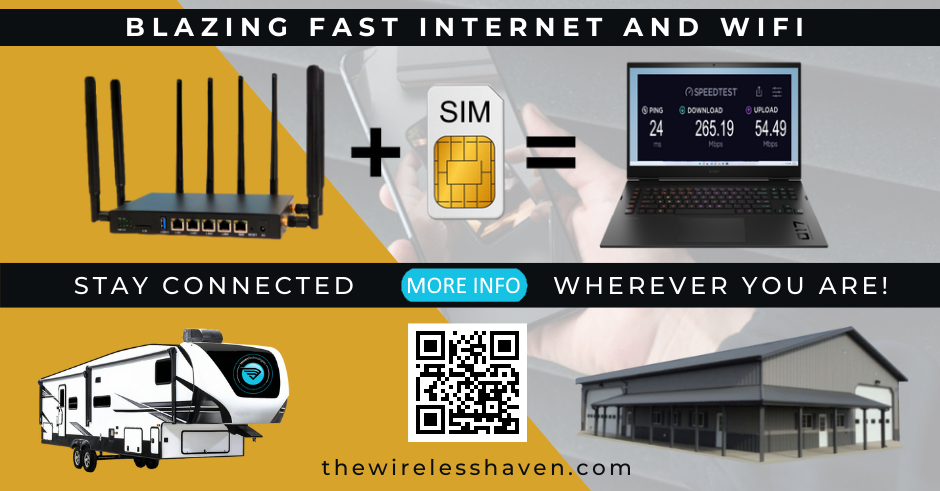This post covers what I have learned the hard way, in an effort to save you significant time and money. It is a combination of best practices that I have gleaned from others on this site, boiled down and simplified for anyone looking for a place to start. I am omitting links to specific products or services as they will change over time. This is meant to be a starting point.
As a side note, I didn’t do any of the below and it cost me a lot of time and money. I should have visited Wireless Joint first!
What I have found:
- There is no single solution that works in every case. Everyone’s situation is different: distance from the tower, obstructions, carriers available, available bands, etc. There will be some trial and error. In an effort to reduce pain during this process, I suggest you follow this simple guidance.
1. Test first with what you have
Use any cellular devices you have or can borrow to test performance. Use the same speed test application on each device if possible. You are looking for the highest download speed (and upload, but less important) and the lowest PING time. Test different carriers and test from different locations, in and around your dwelling.
2. Do not purchase package solutions
As mentioned, there is no single solution to meet your needs, once you find the carrier that has the best signal where you need internet, find a plan that allows you to bring your own device. There are 3rd party services that promote unlimited, unthrottled services. Search this forum before landing on one. Most of these 3rd party services offer router and antenna packages with service; avoid them.
3. Start simple with expansion in mind
Once you have a cellular plan ordered, find the right cellular modem/wifi router combination. thewirelesshaven.com is where you start, call them and explain your situation, they will assist you with the right gear. If you have strong speeds and low PING times on your test device, do not over purchase. You will likely only need a cheap phone with tethering or a mifi device to support your internet needs. If you want more, or (like me) have really poor signal then do not go cheap on this equipment, spending a little more will determine whether you can upgrade or have to throw the device out. Better modems/routers have additional antenna options and replaceable/upgradeable components.
4. Antennas
If you need additional signal strength, antennas will likely get you there. This is where the biggest differentiation comes in between one person’s needs and another’s. Once again, thewirelesshaven.com is your best resource.- If you have:
1. Direct line of sight (LOS) to the cell tower – yagi or log periodic antennas
2. No direct LOS, many obstructions – directional panel or omni
Omni is best if you get equally strong signal in more than one direction. Not common.
5. Remove bottlenecks
The primary bottlenecks that you can control are height of antenna and cable length. Signal loss increases with cable length so keep them as short as you can. Many on this forum have opted to mount cellular modems in weather-tight boxes on the eaves of their roof or on a pole with the antenna to reduce this signal loss. As mentioned, height is your friend, but do not overdo it. A swaying antenna or one that blows away in a storm is no good.
6. Protect your gear
If you do need specialized modems and antennas to get the signal you desire, protect it (and your home) with lightning arresters. Use high-quality surge suppressors for modems and routers. - If you have:
If asking for assistance on this or any other forum, be concise but provide as much detail as you can. Know a bit about your tower locations using cell mapping websites, google earth or just drive to the closest towers. The more detail you provide, the faster you will get to resolution.
Hope this helps!


